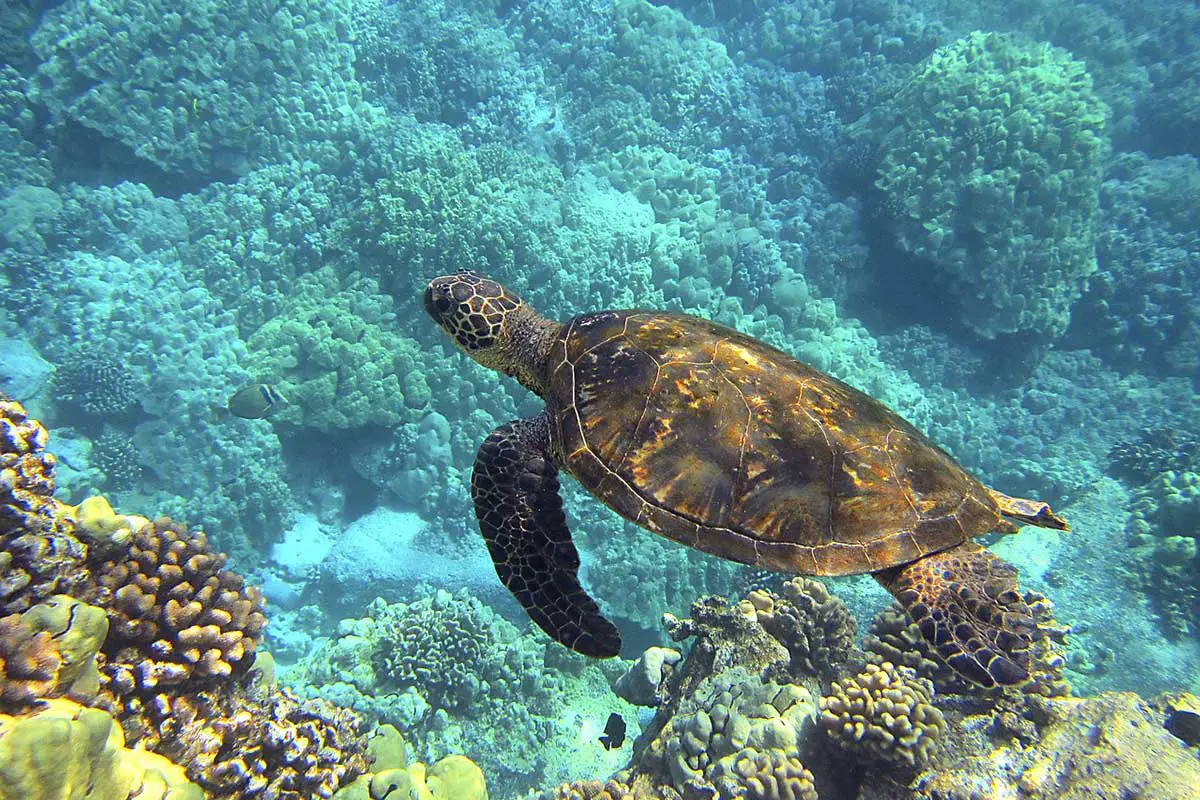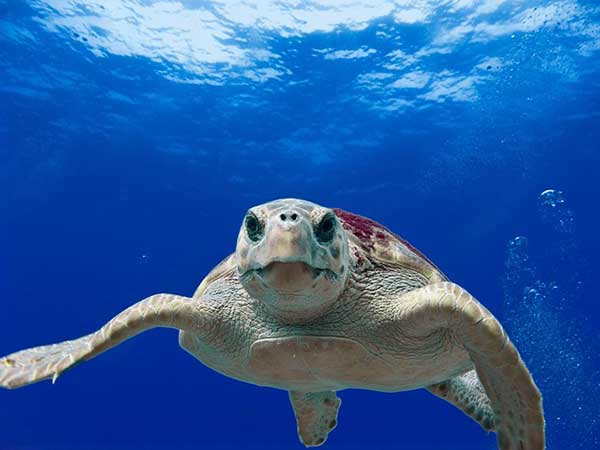Sea turtles are an important part of Hawaii and its culture. The Hawaiian Islands are home to several species of sea turtles, including the green sea turtle and the hawksbill sea turtle, which are the most commonly observed species. Other species, such as the loggerhead, olive ridley, and leatherback turtles, are rare visitors to the waters surrounding the islands.
Sea turtles have a significant cultural and spiritual significance in Hawaiian culture. They are mentioned in the Kumulipo, the Hawaiian creation chant, and are revered as spiritual guardians by some families. Sea turtles are also important to the local economy, as they are a popular attraction for tourists who come to the islands to see them in their natural habitat.
Despite their importance, sea turtles face many threats in Hawaii, including habitat loss, pollution, and accidental capture in fishing gear. Efforts are being made to protect and conserve these species, including the establishment of marine protected areas and the implementation of regulations to reduce bycatch in fishing operations.
Species of Sea Turtles in Hawaii
1. Hawaiian Green Sea Turtle
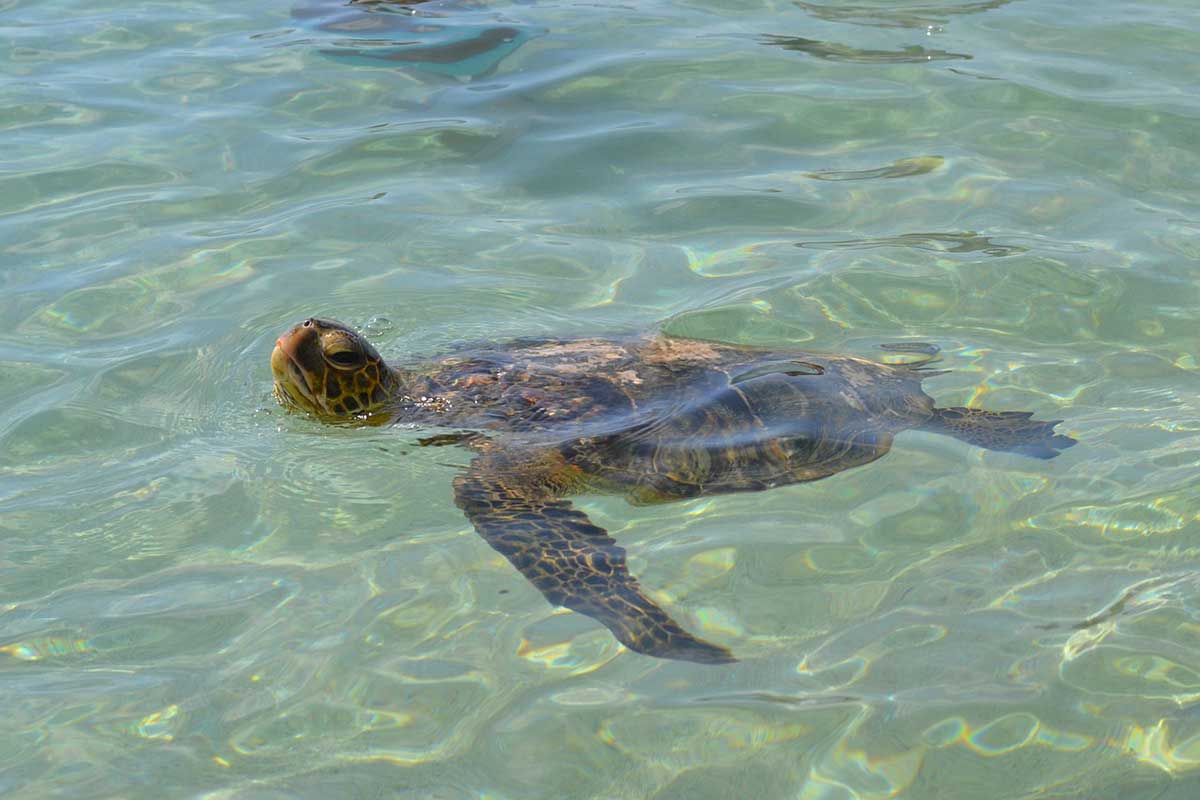
The Hawaiian Green Sea Turtle, also known as Honu, is a species of sea turtle endemic to the Hawaiian Islands. It is one of the two most commonly observed sea turtle species in Hawaii, the other being the Hawksbill Sea Turtle.
Adult Honu can grow to be 4 to 5 feet in length and weigh between 200 and 250 pounds. They have a heart-shaped, dark green to brown carapace (shell) and a lighter yellowish-green plastron (underside). They are named for the greenish color of their body fat, which is caused by their herbivorous diet of algae and seagrass.
The Hawaiian Green Sea Turtle is a culturally significant species in Hawaii, with a long history of being revered and protected by native Hawaiians. Today, the species is listed as threatened under federal and state law, and efforts are being made to protect and conserve their populations.
- Habitat: Hawaiian Green Sea Turtles can be found in shallow, coastal waters and bays throughout the Hawaiian Islands.
- Behavior: Green Sea Turtles are generally docile and can often be observed resting on beaches or rocks or swimming in shallow waters. They are known for their distinctive “honu” sound, which they make while breathing.
- Conservation: The Hawaiian Green Sea Turtle is protected under the Endangered Species Act and the Marine Turtle Protection Act, and it is illegal to harm or harass them in any way. Efforts are being made to protect their nesting beaches, reduce threats from fishing gear and marine debris, and educate the public about the importance of conservation.
Overall, the Hawaiian Green Sea Turtle is a beloved and iconic species in Hawaii, and efforts are being made to ensure their survival for future generations to enjoy.
2. Hawksbill Turtle

The hawksbill turtle is one of the five species of sea turtles found in Hawaii. These turtles are known for their beautiful mottled shells that consist of an irregular combination of shades of amber, orange, red, yellow, black, and brown. The shells typically have serrated edges, with overlapping scutes. Their head comes to a tapered point and their lower jaw is V-shaped, giving them a hawk-like appearance.
Compared to the green sea turtle, hawksbill turtles are very rare in Hawaii. In fact, they are outnumbered by green sea turtles by about 100 to one. Hawksbill turtles are known to nest on the larger islands of Oahu, Maui, Molokai, and Hawaii. However, fewer than 15 females are known to nest annually across the entire archipelago.
Like all sea turtles, hawksbill turtles are threatened by habitat loss, pollution, and hunting. They are listed as critically endangered by the International Union for Conservation of Nature (IUCN). In Hawaii, it is illegal to harm, harass, or kill sea turtles, including hawksbill turtles.
3. Leatherback Turtle
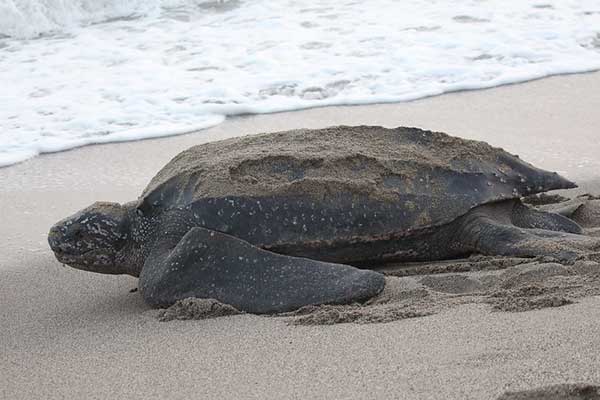
The Leatherback Turtle (Dermochelys coriacea) is the largest of all living turtles and is the fourth-heaviest modern reptile behind three crocodilians. It is the only living species in the genus Dermochelys and family Dermochelyidae.
Leatherbacks are the only sea turtle in which adults are also pelagic and they are known for their ability to dive to depths of up to 1,280 meters (4,200 feet) in search of their prey. These turtles are found in all the world’s oceans and are known to travel great distances.
Leatherback turtles are listed as Vulnerable on the International Union for Conservation of Nature (IUCN) Red List. The main threats to their survival are incidental capture in fishing gear, egg collection, and coastal development. In Hawaii, the Leatherback Turtle is a rare visitor, with only a few sightings recorded each year.
Leatherbacks are unique among sea turtles in that they have a soft, leathery carapace rather than a hard, bony shell. Their carapace is covered with small, white, waxy crystals that help to regulate their body temperature. They are also the only sea turtle species that lacks scales on their limbs and heads.
Leatherbacks are known for their diet of jellyfish, but they also eat other soft-bodied organisms such as tunicates and salps. They are important predators in the ocean ecosystem and play a vital role in maintaining the balance of marine food webs.
4. Olive Ridley Turtle
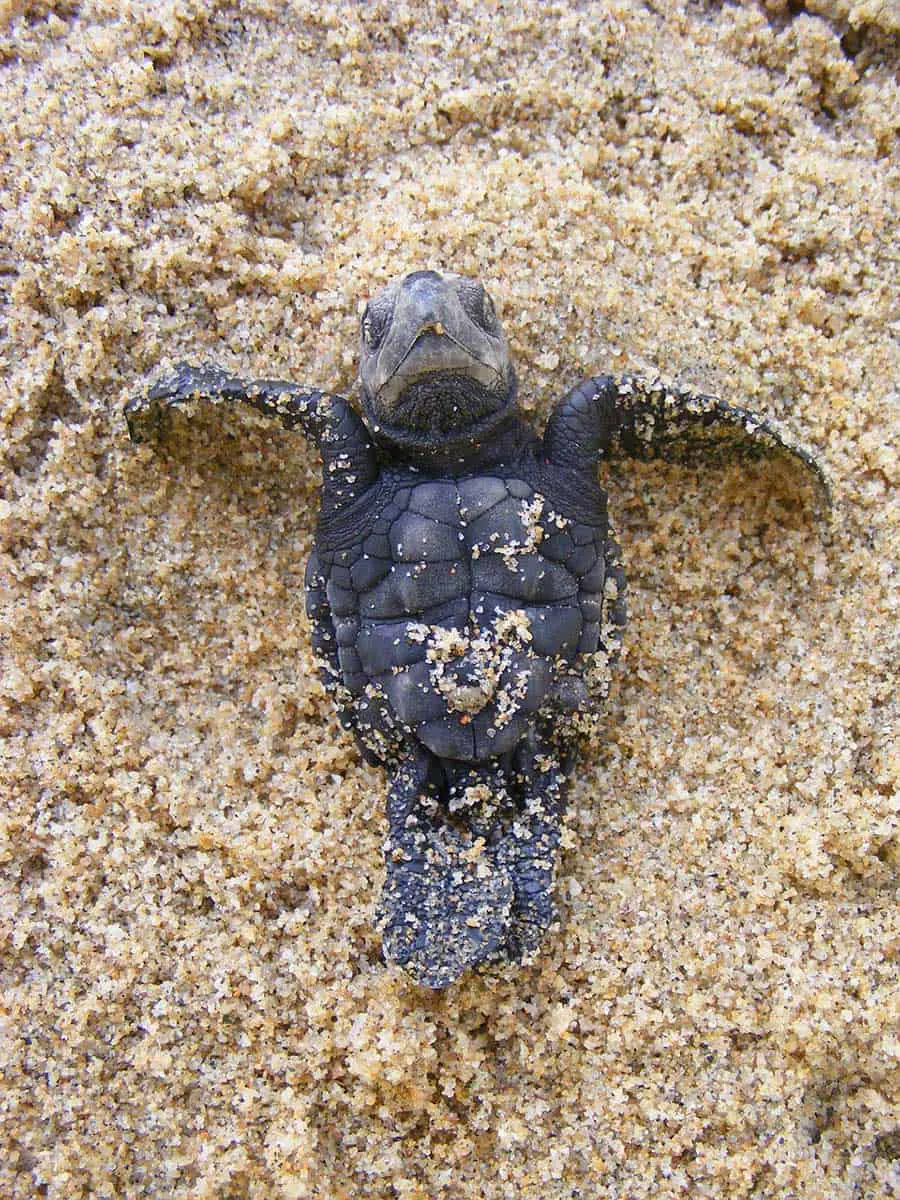
The Olive Ridley Turtle (Lepidochelys olivacea) is one of the sea turtle species that can be found in Hawaii. They are named for their olive-colored carapace, which is heart-shaped and typically measures between 60 to 70 centimeters in length.
These turtles are the smallest and most abundant sea turtle species in the world, with a range that extends throughout the Pacific, Atlantic, and Indian Oceans. Olive Ridley Turtles are known for their synchronized nesting behavior, where thousands of females come ashore at the same time to lay their eggs.
In Hawaii, Olive Ridley Turtles are considered a threatened species and are protected under the Endangered Species Act. They are rarely seen in Hawaiian waters, and only a few nests have been recorded on the islands in recent years.
Like other sea turtles, Olive Ridley Turtles face many threats, including habitat loss, pollution, and accidental capture in fishing nets. Efforts are being made to protect these turtles and their nesting sites in Hawaii and around the world.
5. Loggerhead Turtle
The Loggerhead Turtle, or Caretta caretta, is a species of sea turtle found in the subtropical and temperate regions of the Atlantic, Pacific, and Indian Oceans, as well as in the Mediterranean Sea.
In the Atlantic, their range extends from Newfoundland to Argentina. They are a wide-ranging species, occurring throughout the temperate subtropical and tropical regions of the ocean.
Loggerhead Turtles are named for their large heads that support powerful jaw muscles, allowing them to crush hard-shelled prey like clams and sea urchins. They are less likely to be hunted for their meat or shell compared to other sea turtles.
Mature male Loggerhead Turtles are distinguished by longer and thicker tails. Little information exists on the feeding behavior of post-hatchlings in pelagic waters, but they are known to feed on a variety of prey including crustaceans, fish, and jellyfish.
